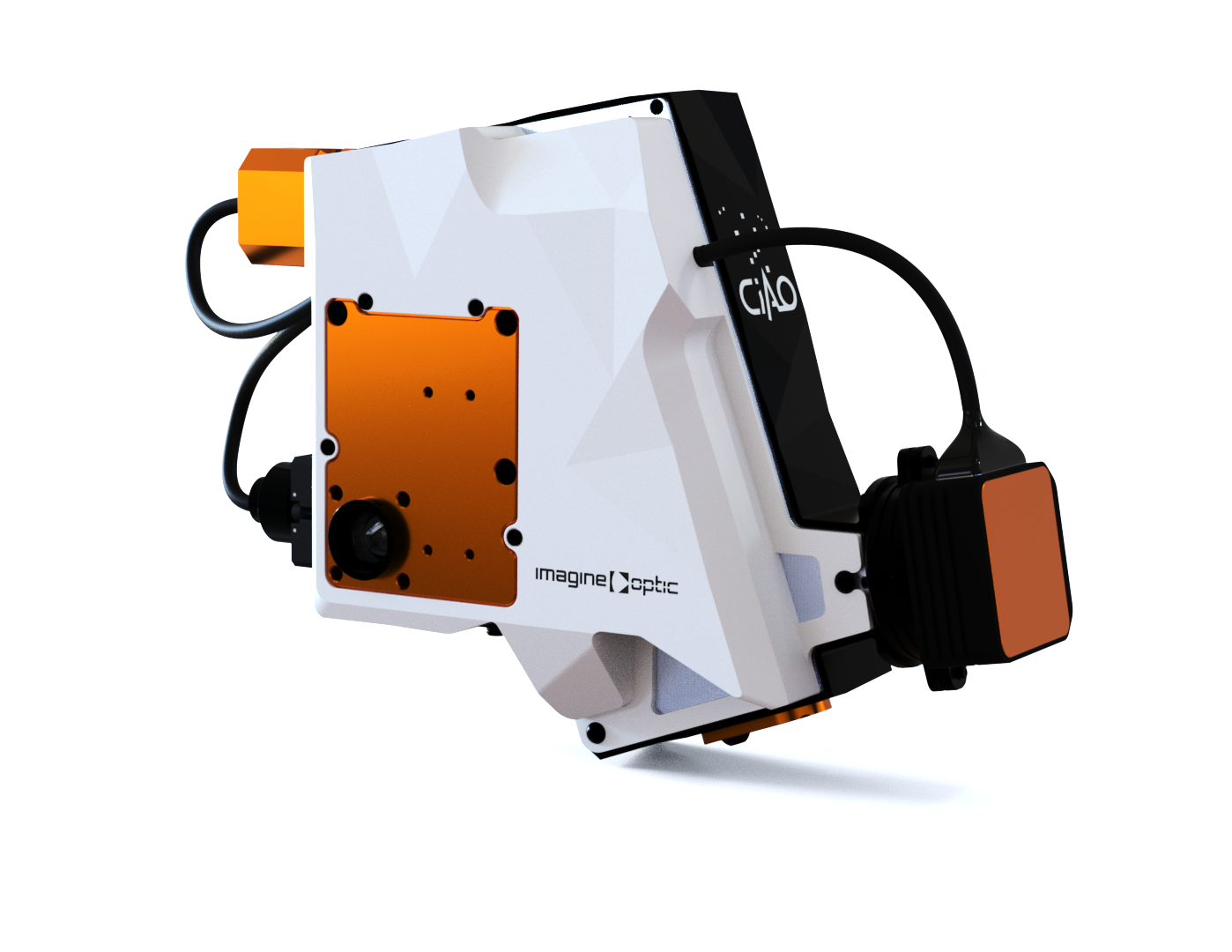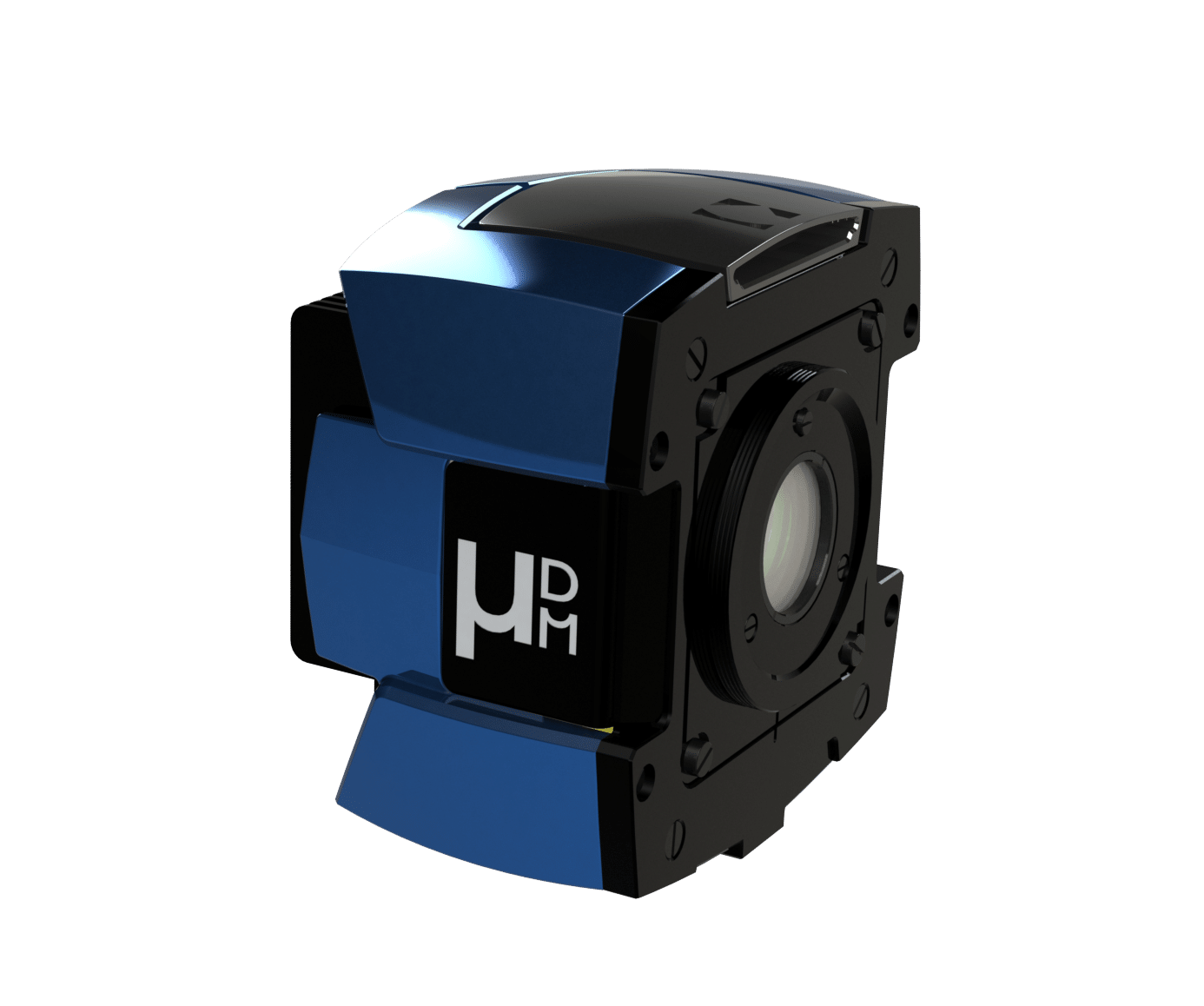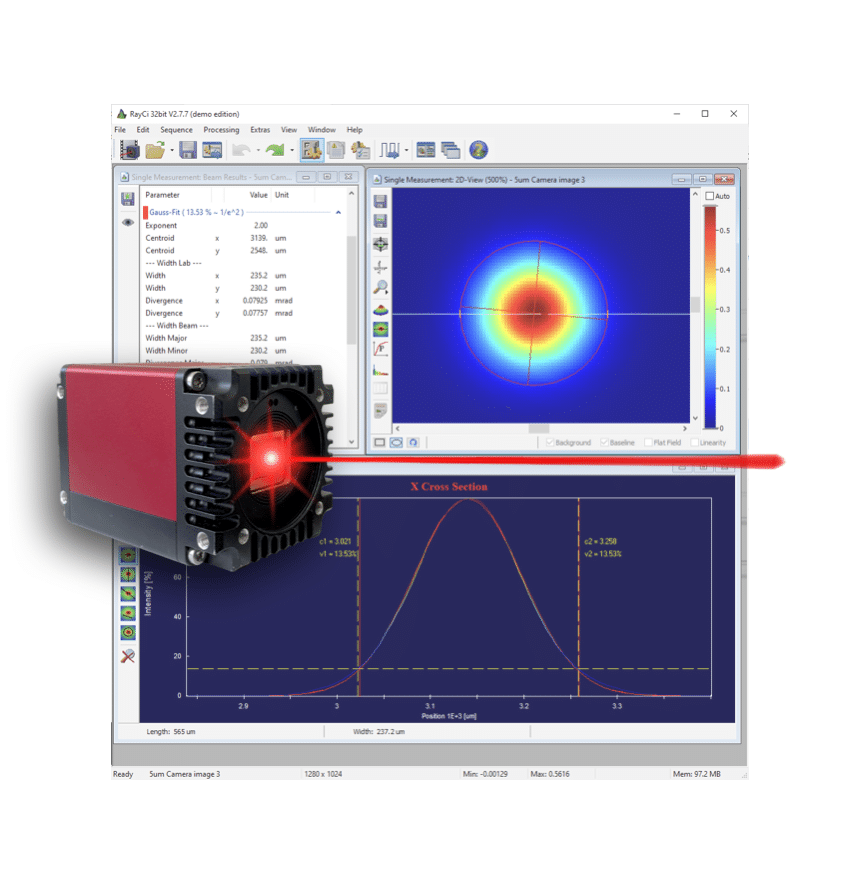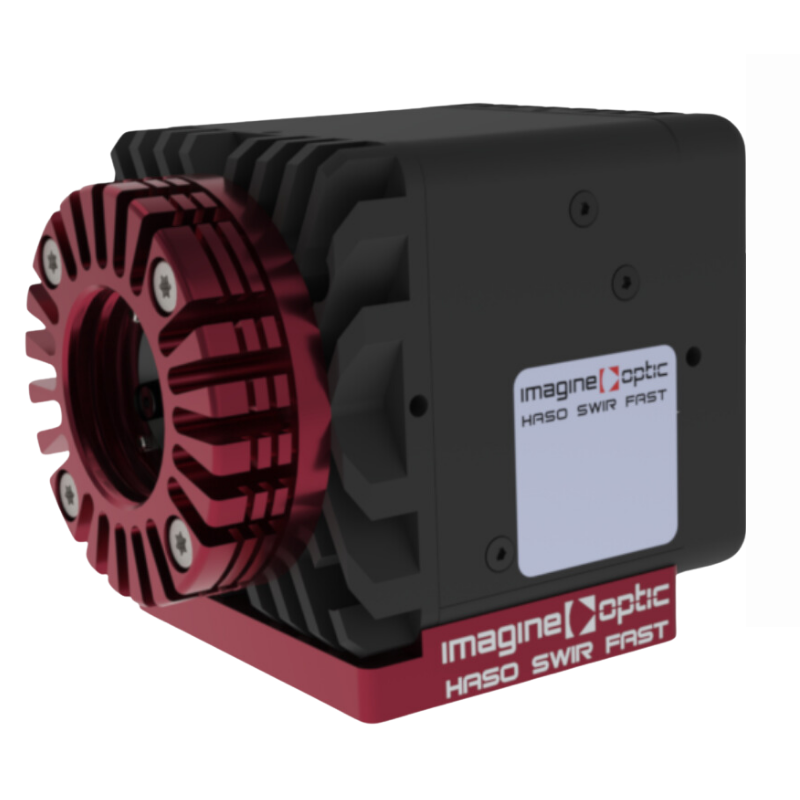
Free-Space Optical Communications (FSO)
Related Products

What is Free-Space Optics (FSO)?
FSO is a line-of-sight technology that uses lasers to provide optical bandwidth connections or FSO is an optical communication technique that propagate the light in free space meaning air, outer space, vacuum, or something similar, to wirelessly transmit data for telecommunication and computer networking. Currently, FSO is capable of transmitting several Gbps of data, voice and video communications through the air, allowing optical connectivity without requiring fiber-optic cable or securing spectrum licenses.
Links typically operate on the 780 – 1600 nm wavelength band and use O/E and E/O converters. FSO requires light, which can be emitted by either light emitting diodes (LEDs) or lasers (light amplification by stimulated emission of radiation). The use of lasers is a simple concept similar to optical transmissions using fiber-optic cables; the only difference is the transmission media. Light travels through air faster than it does through glass, so it is fair to classify FSO as optical communications at the speed of the light. FSO communication is considered as an alternative to radio relay link line-of sight (LOS) communication systems.
FSO communications can provide high data rates in Gbits/s ranges through the atmosphere for ranges from a few hundreds of meters to a few kilometers. FSO links include the following:
- chip-to-chip communication
- indoor infrared (IR) or VLC,
- inter-building communication
- free-space laser communications including airborne, space borne, and deep space missions
FSO components below to three categories : transmitters to send of optical radiation through the atmosphere obeys the Beer-Lamberts`s law, free space transmission channel where exist the turbulent eddies (cloud, rain, smoke, gases, temperature variations, fog and aerosol) and receiver to process the received signal. Typical links are between 300 m and 5 km, although longer distances can be deployed such as 8–11 km are possible depending on the speed and required availability.
Here are some FSO applications:
- Telecommunication and computer networking
- Point-to-point LOS links
- Temporary network installation for events or other purpose as disaster recovery
- For communications between spacecraft, including elements of satellite constellation
- Security applications
- Military application: (its potential for low electromagnetic emanation when transferring sensitive data for air forces)
- Metro network extensions: carriers can deploy FSO to extend existing metropolitan area fiber rings, to connect new networks
- Enterprise connectivity: the ease with which FSO links can be installed makes them a natural for interconnecting local area network segments that are housed in buildings separated by public streets or other right-of-way property.
- Fiber backup: FSO may also be deployed in redundant links to backup fiber in place of a second fiber link.
- Backhaul: FSO can be used to carry cellular telephone traffic from antenna towers back to facilities wired into the public switched telephone network.
- Service acceleration: FSO can be also used to provide instant service to fiber-optic customers while their fiber infrastructure is being laid.
- Last-Mile access: In today’s cities, more than 95% of the buildings do not have access to the fiber optic infrastructure due to the development of communication systems after the metropolitan areas. FSO technology seems a promising solution to the connection of end-users to the service providers or to other existing networks. Moreover, FSO provides high-speed connection up to Gbps, which is far more beyond the alternative systems.
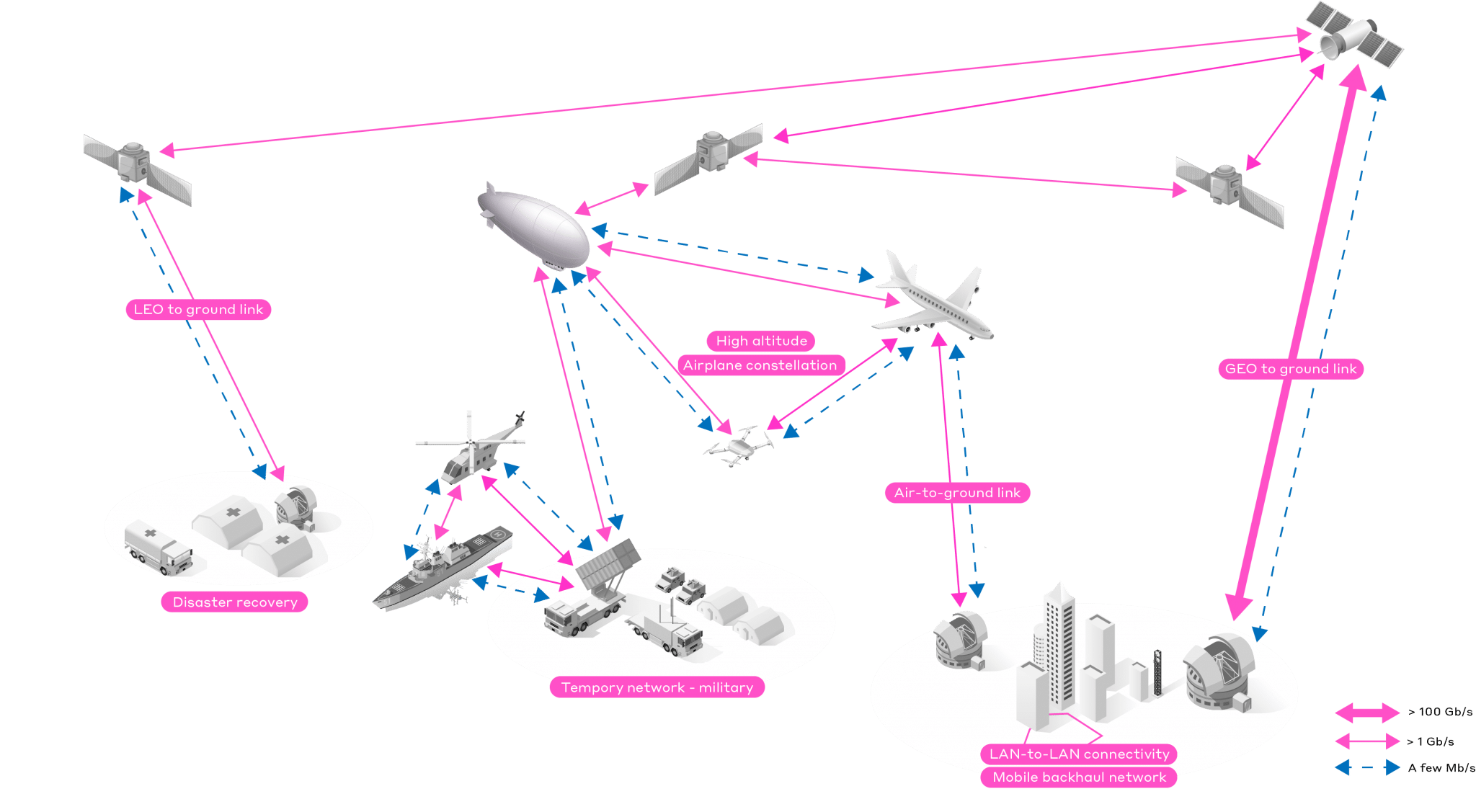
Free-Space Laser Communications
The atmospheric attenuation is one of the challenges of the free-space optical communications, which may lead to signal loss and link failure. The atmosphere not only attenuates the light wave but also distorts and bends it. Transmitted power of the emitted signal is highly affected by scattering and turbulence phenomena. Attenuation is primarily the result of absorption and scattering by molecules and particles (aerosols) suspended in the atmosphere. Distortion, on the other hand, is caused by atmospheric turbulence due to index of refraction fluctuations. Attenuation affects the mean value of the received signal in an optical link whereas distortion results in variation of the signal around the mean.
A free-space optical communication system is influenced by atmospheric attenuation, which limits their performance and reliability. The atmospheric attenuated by fog, haze, rainfall, and scintillation has a harmful effect on FSO system. The majority of the scattering occurred on the laser beam is Mie scattering. This scattering is due to the fog and haze aerosols existing in the atmosphere and can be calculated through visibility. FSO attenuation at thick fog can reach values of hundreds of dBs. Thick fog reduces the visibility range to less than 50 m, and it can affect the performance of FSO link for distances. The rain scattering (non-selective scattering) is independent on wavelength, and it does not introduce significant attenuation in wireless infrared links, it affects mainly microwave and radio systems that transmit energy at longer wavelengths. There are three effects on turbulence: scintillation, laser beam spreading and laser beam wander. Scintillation is due to variation in the air refractive index . If the light is traveled by scintillation, it will experience intensity fluctuations. The geometric loss depends on FSO components design such as beam divergence, aperture diameter of both transmitter and receiver. The total attenuation depends on atmospheric attenuation and geometric loss.
Atmospheric Turbulence Mitigiation using Adaptive Optics
Adaptive Optics (AO) removes the effect of air turbulence in order to improve the coupling efficiency in the receiver optical fiber. Typically, an AO system allows an optical gain of at least 10x on the injected flux which translates into a 10 fold increase in link capacity.
As described in the picture below, adaptive optics systems rely on the combination of a deformable mirror (DM) , a high speed wavefront sensor ( such as HASO SWIR FAST ) and real time control electronics to quickly measure and correct air turbulences.

Our partner Imagine Optic offers a standard turn-key system called CIAO SWIR that integrates all components into a telescope compatible package. CIAO SWIR was designed with affordability in mind, and is based on an efficient and fast DM/wavefront sensor/Software combination.
With CIAO SWIR , only a few implementation steps are necessary to improve your FSO signal : connect the device to your telescope, plug the fiber, switch on the system, run a automatic calibration phase and enjoy the signal at the output of the fiber ! The graph below shows a signal improvement thanks to the CIAO system.

Sources:
Free Space Optical Communications — Theory and Practices
In: Mutamed Khatib (Eds.), Contemporary Issues in Wireless Communications – November 2014

